It’s quite a well known fact that the paint colors you choose for a room will impact how you feel when you spend time in the space. But many don’t realize that the same fact applies to the exterior of your house as well.
A neighborhood filled with beige nondescript houses isn’t very appealing for the eye. They don’t have that calming sense of home like a white farmhouse would give. While many might advise you to choose beige because it’s neutral, be encouraged to be bold instead.
Which is the best color for a house?
While the geographic location of your home may play into your choice of an exterior paint color, certain shades are just more popular.








Before you pick a color for the outside of your house, be sure to check with your homeowner’s association if you have one because there may be restrictions on which ones you can choose. Here are the most popular options:
White
Especially in the US, white is a classic and timeless choice. Remember that you don’t have to go for the brightest white because there is a wide range of hues available, depending on how warm or cool of a white you want.
Off-White
Equally popular is off-white, which also comes in a huge range of shades. Pick an off-white that blends well with the accent colors you’ll be choosing for the trim, shutters or other parts of the exterior. You can get good contrast with a bold front door color.
Yellow
Immediately perceived as a joyful color, yellow is popular as an exterior paint color but restraint is necessary. Anything too bright can seem a little garish so it’s safest to stick with pale or mild, buttery yellows.
Light Blue
It doesn’t really matter where your house is located, light blue shades are among the best house colors. It’s a serene color that fits well with many home styles and that most people find aesthetically pleasing.
Gray
While gray may be waning in popularity as an interior paint color, on the outside of your home it’s still a winner. It pairs well with so many other colors that you can have a wide range of choices for accent colors.
Blue Gray
Darker hues are having their day when it comes to the best house colors and moody gray-blue shades are a prime example. Whether you opt to go deeper or stay with a lighter shade of blue-gray, you’ll have a versatile color that looks great with white trim in particular.
Taupe
Neutrals are a classic choice inside and out. Choosing a shade of taupe for the exterior opens up a wide range of options for trim and for accents. Neutrals are an especially good choice if a resale is in the near future.
Putty
Some people interchangeably use the terms taupe and putty, but these days, putty colors may be more associated with greige. Putty can have undertones of gray or be a real mix of a gray tone with other shades. The colors in this category are neutral and go especially well with stone.
Wheat
This is another shade that often gets lumped in with off-white or taupe, but it actually has more yellow in it than taupe. It’s a light color that pairs especially well with browns and can also be paired with grayish blue.
Brown
Darker, earthy shades of brown are best as an exterior house color because lighter shades can seem a bit boring. Brown colors need a brighter counterpoint to have a lively look, so opt for something like a bold red, blue or black for the front door or some other accent.
Green
If you’re sold on using green for the exterior of your home, be sure to choose a grayish green so that the house wont; blend in with the lawn. The right shade makes a great contrasting hue for white trim and dark
Red
Red is another cheery color that can be anything from a bolder farm barn red to an earthier shade that skews toward terra cotta. This house color is a good example of how geography can play into exterior color choice: In the southwestern US, you’re more likely to see the earthier shades of red.
How do I choose an exterior color combination?
Besides being a color that you like, the outside of your home should in a hue that fits with its surroundings. The color should also improve the curb appeal of your house, especially if you plan on selling it before it’s time to repaint it again. This is a big decision so take your time and make sure that you’re choosing something that you’ll like for more than just a few years.
Actually, you’ll have to make more than one color choice because you need a second color for the trim and possibly a third for any other accents on the house. It’s a good idea to consult with your paint store or painting professional on what colors go together well. Some things to consider when choosing a color include:
- The size of your home. Just as light and dark paint colors have an effect on the interior of your house, the same is true for the exterior. In general, light shades make the house look bigger and will change in nature throughout the day as the quality of the sunlight shifts. Darker colors can help a house blend with its surroundings and can make a structure seem smaller.
- The architecture of your house. The color combinations you consider should match the architecture. For example, the color palette that you use on a Victorian-style house with intricate gingerbread detailing will not work for a modern home or the average suburban house.
Which house colors have positive energy?
According to ancient arts such as Feng Shui, colors bring with them various feelings and moods. Above all, choose a color that you love and then consult any color charts or energy advice you may be interested in. The main thing to remember is that you don’t have to paint the entire house in a suggested color. The trim, an accent or color in landscaping is enough.
In Feng Shui, the direction the house is facing also factors into what colors are best to use. Here are some of the directions and colors to consider, along with their significance in this theory of arranging your living spaces in a way that is in balance with nature. As per the Feng Shui Pundit, consider these colors.
- North Facing. The element associated with this direction is water and the colors to use are black, dark blue. This combination is said to have an effect on wealth, success and careers.
- Northeast Facing. This direction is connected with Earth and the relevant colors are Black, blue and green. These colors are believed to connect with education and personal power.
- East Facing. Homes that face the east are ties with wood and should use colors like green, turquoise and aqua. This combination of directions and colors is tied to family.
- Southeast facing. Also associated with wood, these homes also are best green or blue, but also, purple or red. These colors are tied to growth and wealth.
- South facing. Houses oriented to the south are associated with fire and are best with color choices like red, yellow or orange. These warm hues are associated with fame and recognition.
- Southwest facing. This orientation is also connected with the earth, but the best colors are red, pink and white. Marriage and relationships are the life aspects involved in this direction.
- West facing. Associated with metal, homes facing west should have white, silver, copper or brass on the front. Fertility and creativity are connected with this direction.
- Northwest facing. Also connected with metal, homes facing northwest should incorporate white, gray, blue or black. The quality tied to this direction is empowerment.
What are the new trends in exterior house colors?
While we’ve already covered the most popular colors, there are some up-and-coming contenders that are being come common. These trending colors are great to incorporate if you’re planning to paint your house in the near future.
Black
Definitely not your traditional house color, black exteriors are becoming more common as homeowners embrace a more modern look and dark shades that help a house stand out from the cul-de-sac crowd. This color can also make the surrounding plantings and landscaping pop. If you like the idea but don’t want to paint the whole house black, use it to create a bold focal point by painting the front door black or updating your shutters with this trendy color.
Charcoal
A step lighter than black, luxurious shades of dusty charcoal are fabulous for immediately updating the look of an average house. It’s more adventurous than usual but not as bold a solid black. Charcoal also gives you a wide range of options for accent colors for the front door.
Warm White or Cream
Toned-down shades of white are a subdued, neutral option that is gaining in popularity.
The creamier colors are a great counterpoint to some of the popular bold hues and have a very sophisticated appearance.
Vibrant Green
When considering green, think rich and opulent. This color plays on the attraction to nature that has taken a front seat in the past couple of years. Be cautious with paler greens that look a little faded from the get-go and pick a shade with some real personality.
Gray-Greens
In step with the trending preference for moodier colors, gray greens are a wonderful choice because the shade is very calming. It also hits the range that is complementary to foliage and doesn’t compete with the natural environment.
Navy Blue
This color is a classic but is finding renewed appeal as an exterior home color this year. It is particularly complementary to wood and to creamy accents. If plain navy is a little too basic for you, moving toward the gray range, which gives navy a moodier feel, is a similar option.
How much does it cost to paint a house?
Taking the DIY route to painting the house is a huge commitment both in time and effort, which is why even homeowners who are avid interior painters tend to leave the exterior work to the professionals. That said, having the house painted can be a substantial expense, depending on a number of factors:
- Home size
- Amount of siding and trim
- Architectural details
- Type of material covering the home
- Type of paint.
On average, it costs from $3,500-$7,000 to paint the exterior of a house, according to Fixr.com. The average homeowner ends up spending about $5,362 to paint a home that has 1,500 square feet of wood siding, along with trim and the requires prep-work. Obviously, larger homes. Those that are three stories tall and those that have a lot of architectural detailing will cost more. Some other factors to consider that will affect the price of painting your house painted are:
- Geographic location
- Condition of the exterior material
- How easily painters can access the sides of the house.
- The type of exterior paint you choose.
How to paint a brick house
There once was a day when brick homes were what everyone wanted however times change and although brick is super durable, it may not be the most stylish or on-trend option today. A quick update for brick is paint. Although not everyone is a fan of painted brick, there are good reasons for this choice:
- It’s very affordable. Replacing the brick is not a budget-friendly option.
- Paint can lighten the visual aesthetic of the home.
- Painted brick can have more curb appeal and hence a better chance of good resale.
Similar to painting any type of home exterior, painting a brick house is also a big job, with probably some extra prep work. Again, you can choose the DIY route, especially of only part of your home is brick. Just note: Bricks have a reputation as being very difficult to paint because they are porous and absorb paint.
Clean the brick.
- For the paint to properly adhere to the brick, it needs to be completely clean and dry before you start applying paint. The easiest way to clean the brick is by using a pressure washer if you have access to one. Otherwise, you’ll need to rely on good, old-fashioned scrubbing with soapy water and a brush with stiff bristles. Keep in mind that newly installed brick should not be painted for at least a year.
- If the brick is quite dirty, you’ll need to use something stronger, such as trisodium phosphate (TSP). Just mix a half-cup of it into a gallon of water. If you find mildew anywhere on the exterior, mix one part bleach with three parts of water. Let the solution soak on the brock for about 30 minutes and then scrub it. Don’t use an acid to remove the mildew or the paint may not stick properly.
- Fill any damage or cracks with acrylic caulk. If there’s more serious damage, consult a mason to repair it before you paint.
- What at least 24 hours between cleaning and painting so the brick has a chance to thoroughly dry out.
Put on the primer
- Latex primer can be applied in a number of ways, including a brush or roller.
- If you need to cover large areas, consider a paint sprayer. When using a sprayer, you’ll have to cover the doors, windows, and anything else that you don’t want to paint with newspaper and painters tape.
- If you cleaned off any mildew, be sure to apply a couple of coats of primer on those spots.
- Let the primer dry completely.
Pick the paint.
- In general, most people use plain acrylic latex exterior paint for brick. It holds up well against mildew and efficiently evaporates moisture. Some prefer to use a paint that is more elastic, called elastodynamic, because it is particularly good for filling and preventing cracks and does very well in high humidity environments.
Paint the brick
- Just as with the primer, you can use a roller with a thick nap and brushes to apply the paint, which is good if you don’t need to cover a huge surface. Otherwise, it pays to invest in or rent a paint sprayer. Use just one coat of paint over the primer unless your paint specifies two coats.
How long does it take to paint a house?
In general, the average-sized house takes a team of two to three people about three to four days to paint. Of course, this is assuming that the house has one or two stories and four or fewer bedrooms. A three-story house, or one that has five or more bedrooms. will need will five to six days for the painting process. Just as with the price, the time and steps required to paint the house will also be affected by a number of factors.
Cleaning
Cleaning the surfaces to be painted is mandatory step in the process? Power washing the exterior walls is to get rid of dirt, mildew, pollen and loose paint and contaminants is key to achieving a smooth, even, long-lasting paint job. A full day has to be allotted to power washing because even though the actually washing doesn’t take all day, it has to dry thoroughly before painting starts. Wood siding might take a little longer than a day to dry completely.
Preparing the Surfaces
This is a big “if” in the process. If the home has peeling paint and needs any stripping or priming, the process will take at least a day longer. If the additional prep work is substantial, it could mean several more days.
Painting
Proper painting, assuming good weather, will take two or three days on average and 7 to 10 days for a large house with plenty of detail. Rain – especially heavy storms – will definitely add to the time required to complete the house.
The length of time for the process alone is enough to keep homeowners from taking the DIY route: If it takes a professional crew of three about a week — 120 man hours — to paint an average house, the DIY job will take much longer.
How Often Should I Paint the Exterior of My House?
This is probably the most common question about exterior house painting. Of course, it depends on the climate and weather conditions where you live, but according to Five Star Painting, you should expect to repaint the exterior about every 10 years, but it might be as little as 7 years.
- The quality of the previous paint job will affect its longevity.
- Poor prep work will cause the paint will degrade in a few years.
- Temperature and humidity will affect how the paint adheres and dries.
- The type of paint and how many coats were applied affects durability.
- Darker colors absorb more light and heat and will fade faster.
If you’re considering whether or not to have the outside of your house painted, here are some signs that it’s time to do so, according to Certapro.
The exterior shows wear and tear. If you see cracks, bubbles or peeling, the paint isn’t staying attached to the surface and is allowing moisture to get in underneath. This is not good and can indicate moisture damage forming.
The color of the paint is fading. Physically, fading paint is not dangerous but it certainly makes a house look old and worn out. The fading comes from years of un exposure, which affects the pigments in the paint.
It’s time to sell the house. If it has been a while since the house was last painted, a freshly done exterior can really boost curb appeal. Depending on the market conditions, your real estate professional should be able to tell you if the cost of painting is worth the potential benefit.
You see gaps around doors and window frames. Gaps occur where the house looks like it is separating from the door and window frames. You definitely need to caulk the spaces to prevent water from getting in, but it will likely be time to repaint too.
The caulk has cracked in places. Over time, caulk can dry out, become brittle, crack and then fall out. Even if you have used calk that is paintable, you’ll have to paint it after any repairs are made.
It’s simply time to paint.
Even if the house doesn’t look like it needs to be painted, after 10 years you need to do so. It will be far easier and more efficient to repaint while the house is in good condition rather than waiting until it is in bad shape.
With so many colors on the scale, you just need to decide how to want to feel when you pull up at the end of the day and choose a color based on that feeling. Take a look at these 50 colorful exteriors that will convince you to give your own home’s exterior a color makeover.
Craftsman house style color
Craftsman style homes have such interest in their architecture and deep porches that allow for swings and potted plants. Painting yours a dark shade of blue will bring out the details and make that wonderful porch of yours the most inviting place to escape the summer sun.
Blue: Serenity in a Can
That’s essentially what a dark blue color represents. The psychology of this color evokes feelings of calm and loyalty, which is really appealing in a home color. On certain styles of homes, such as this craftsman, it can also give the structure a nautical vibe, making it perfect in areas near water.
It is not uncommon to find a craftsman styled house on a farm. However you don’t need to have a farm to paint your house red. The eye catching color will still make your exterior feel traditional and down home-y.
Red: A Way to Stand Out
In some ways, red is actually a traditional color choice: Think red barns and brick homes. One thing is for sure and that is that red is an energetic color, however it also signals warmth and comfort. These are both qualities that are desirable in a home, so don’t hesitate to paint your home red. Of course, we’re not talking lipstick red. There are many shades of red, ranging from those with a rusty brown undertone to hues that tend more toward orange.
Black is probably not a color you would choose on your own, but seeing how much it adds to a house might change your mind. It can easily take an old craftsman with good bones and make it feel updates and modern. All with a coat of paint.
Black: Highlight the Details
For some people, painting your house black can be a little controversial. Generally, it’s not a traditional house color, but for many styles, it can be an ideal choice, especially to make architectural details stand out. You might not want to paint a traditional suburban home completely black, but on a craftsman or modern style it can really make a dramatic and appealing difference.
Who wouldn’t love to live in a yellow house? Yellow is such a happy color. Since craftsman style houses have so much trim, the white and yellow shades together will make the exterior seem so bright and fresh.
Yellow: Project Warmth and Cheeriness
Start paying close attention and you’ll find that yellow homes are pretty common and with good reason. They can stand out without being too different and they bring about feelings of cheeriness and optimism. That said, the most common shades of yellow for the exterior of a house are actually the more buttery tones as opposed to a strong primary yellow. In fact, according to Bob Vila, yellow is a great color for resale.
You just can’t get away from millennial pink, even in an article about exterior colors. But if your craftsman home is near the ocean or even a lake, that soft rosy shade can give you all those beachy vibes and make your home the prettiest one on the block.
Millennial Pink: It’s Here to Stay
While you might think millennial pink is just a trendy hue, it has actually been around for a long time when it comes to home exteriors. Probably the best example is the Victorian style, where the soft hue is a gentle but effective way to highlight the intricate gingerbread trim all around the house. Ideal for setting off the lines of a craftsman home, it’s also found on beachside bungalows and in brick form on other homes.
Green might be the safest exterior color apart from beige. Such a calming shade will blend with whatever landscaping you have and look great in the background of all your Instagram selfies. It might even act as some stress relief as soon as you arrive home from work.
Green: The Rich Color of Nature
Absolutely perfect for craftsman style homes, hues of sage and olive are a great choice for your home’s exterior. This nature-focused color not only feels, earthy, but it also creates a feeling of tranquility and health. Whether you choose a light shade or a dark one, avoid choosing a grassy green or other shade that blends too seamlessly with the yard and trees, which can make your house disappear into the landscape.
Gray might seem like just as boring of a color as beige, but not on a craftsman. With all that bright white trim, a darker gray exterior will give your home a lift and feel more contemporary without leaving traditional behind.
Gray: As Versatile as a Little Black Dress
While gray may be overdone on the interior, it’s still going strong as an exterior color that can really distinguish a home. It’s neutral nature makes it ideal to pair with almost any accent color. As with any hue these days, the range of shades allows to you create the feel you want: elegant light or medium tones for a timeless feeling or a dark, moody shade for a little drama.
Sometimes, there is nothing wrong with white. White is fresh and freeing. White is classy and neutral. Painting the exterior white gives you a completely blank canvas to start with. White will let your mind wander into the land of shutters and trim and landscaping because that’s just where the road goes.
White: A Classic That Goes With Everything
It might be basic but it’s always popular and doesn’t have to be boring. Painting your house white can be a great choice, especially on a style like a craftsman where it can help emphasize trim or architectural details. Just as white kitchens evoke feelings of cleanliness, a white exterior does the same. It’s as crisp and classic as a white shirt and always a classic option for your home..
Brown doesn’t have to be beige. Consider brown wood siding on your home. Especially on a craftsman style, it doesn’t get more traditional. Your home will immediately feel old and traditional, even if it was only built recently.
Brown: It Doesn’t Have to Be Boring
Brown has sometimes gotten a bad rap in fashion and homes, usually because of the shade chosen and not necessarily the fact that its brown. Darker, earthy shades with different undertones are a great color for homes because they make people feel safe and secure. Of course, wood siding and shingle exteriors can also be brown and these are always popular. Shades of dark brown are also a perfect pairing with colored shutters and other exterior details.
Not quite ready to give up your beige yet? Go with greige instead. This particular shade of gray feels very warm and cozy yet it won’t stand out too much against your neighbors dusky brown homes. Just the kind of subtle statement you’re looking for.
Greige: The Best of Both Worlds
Some people consider beige boring but it was indeed just chosen as one of the colors for 2021. At the same time, gray has crept from its trendy interiors to the exterior of the house. A hybrid option is greige, which is a mix of the two colors. It’s a trending neutral and depending on the light, can look like one or the other. In general, it has more pizzazz than basic beige and can blend easily with trim from wither color family.
Contemporary house style color
When it comes to contemporary homes, most of the time, lots of glass typically comes to mind probably accompanied by a white or gray exterior. In fact, a contemporary home can be a great canvas for highlighting different textures and showcasing color, and houses with a largely neutral palette are no exception. Design details and materials like stone or brick can be a great launchpad for creating a look for the entire exterior. Colors that accent or highlight those materials and the patterns they create are fabulous options.
Related: How to Achieve a Contemporary Style
Contemporary homes are already visually interesting due to the vast windows, linear style and mix of colors. Black is one of the most common exterior colors for this style because the deep shade lends to the modern look that the owner is obviously shooting for. Everything about it just feels new and chic.
Gray is another great modern option for contemporary homes. It really gives the exterior that industrial feel and if you have a lot of rustic metals, you’ll find that gray will complement them perfectly.
Of course white is also a choice, especially for a contemporary exterior. It gives your home a minimalistic look that is often what you’ll find as soon as you walk through the front door. And if you can be consistent with your indoor and outdoor vibes, by all means be consistent.
Nobody said you must stick with neutral colors on your home. Adding a pop of yellow can really take your home from grown-up residence to family friendly space. When you have kids, you want your space to reflect that.
Red is bold and brave, no matter where you decorate with it. But putting red on the exterior of your house will definitely make your place stand out on your street. Which is not a bad thing when your contemporary neighborhood is mostly black.
In all it’s shades, green is just a wonderful color. So why not choose an exterior space to paint your choice of green and create the most relaxing space in the city. Imagine having a glass of wine on the patio, watching the sun set over your green house and you’ll need no more persuasion.
Maybe you live in a place that is cold more months out of the year than not. Happy exterior colors are sure to make you happier than gray and black against the cold sky. Try adding some orange to your contemporary exterior and you’ll find that you can’t help but smile more often.
Is your contemporary house in the midst of classic styled homes? Or maybe your large windows overlook the beach. Go for a dark blue exterior to help your place blend a little more with the locals.
Speaking of the beach, you just have to consider pink for a contemporary beach pad. It’s cheery color will make your home the pride of the neighborhood and the envy of all passersby.
Are you looking to bring touches of rusticity into your contemporary home? Start by putting a rusty red shade on the outside of it. Not barn red, but an orang-y red like you’d find on old tractors and vintage wheels.
Ranch house style color
This style of home has been called the “architectural stepchild” because it has been so disrespected over time, but it is actually very popular and offers great opportunities for upgraded curb appeal. With more people trying to age in place, the ranch home is a very livable, longer-term option so using paint to update what is sometimes considered a “cookie-cutter” look is easy and effective. Painting dated elements like red brick and updating elements like shutters and other accents are very effective. With regard to the range of colors that is appropriate, it is wide and varied.
A sprawling ranch house is usually the style that competes with the red barn in the background. Go for that same red on the exterior of your home and your whole property will look like the picture perfect farm.
Black on a ranch house? That’s exactly right. If you find that your ranch house is a little too traditional for your chic modern tastes, try painting the exterior black. Suddenly you’ve remodeled the entire feel without having to pack up and move.
Pastel blue is such a pretty color. While it might look a little too sappy sweet for a home with siding, a brick ranch is the perfect canvas for the shade. The brick texture will give it enough interest to help your exterior feel light and homey.
Lots of us wish we lived in a cabin in the woods and if you’re ranch house is located in some trees, you can get that look easier than you think. Just go with a brown siding, wood or paint, and your everyday home will look like a vacation house immediately.
Deep forest green is another color that evokes images of summer camp hikes and National Park cabins. So painting your ranch house in the dark shade will give your space the feel of getting away… without actually going anywhere.
With the traditional vibes that most ranch houses have going on, you want to stay on the jewel tone side of things. Especially with colors like orange. Nobody wants a house that looks like a pumpkin so opting for something a little warmer will help your ranch feel homey instead of straight out of the garden.
Gray is such a lovely color. Especially when you paint it over wood or brick so you get all the texture to stand out. Since most ranch homes have one or the other, gray makes the perfect exterior solution.
With all the wood trim and brick accents and gorgeous landscaping, sometimes you just need a color that compliments instead of making your exterior the statement. Sage green is coming to your rescue. It’s soft shade will show off all the other great elements about your home’s exterior without asking for attention.
White ranch houses are not to be ignored. They take a normal home and make it look like a classic farmhouse that has housed the same family for generations. Plus you’ll love the way your Christmas wreaths stand out against the creamy tone.
Of course if you love brick, you probably aren’t thinking about completely repainting your ranch house. Consider giving it a light brush over to soften the orange-y red shade into a welcoming country tone.
Midcentury Modern house style color
Midcentury Modern (MCM) homes are super hot right now and millennial buyers love them for their retro flair, great floor plans and distinctive look. And, while you want a paint job to enhance the curb appeal of your home, the last thing you want to do is hurt the resale value or diminish its appeal. Light colors or earth tones are the classic choices for MCM homes, but actually the range of options is wide open, assuming that you don’t cover up or eliminate classic features like wood, stone or concrete blocks.
Midcentury modern homes are made to be eye catching. Usually there will be a bright color somewhere on the exterior. So going with a neutral gray will help direct the eyes where you want them to go, like your bright front door.
Of course your front door doesn’t have to be the only orange part of your home. Choose a piece of exterior wall and paint it the brightest orange you can find. Chances are the rest of your house will be something neutral so it won’t be too overwhelming.
Who can resist blue, in any shade? If your midcentury modern home has a good bit of wood in the design, blue makes a great complimentary exterior color. Dark or light, it will feel well rounded and personalized when you’re finished.
It might be yellow painted siding, it might be yellow stained wood. However you work it in, that mustard-y yellow is the epitome of midcentury modern design. Most likely you have a piece of furniture in your house to take your inspiration from.
Are you thinking you’d rather focus on the modern and less on the midcentury? Paint your house black. Yes, the whole exterior if you can. The inky color will help your house feel more contemporary and pulled together.
While we’ve discussed orange and yellow, let’s not forget neon green. Another classic midcentury modern color, it will look stellar against the other modern architecture of your home and feel true to style.
Red isn’t resigned to barns and ranch houses. It can look great on your midcentury modern exterior too! In a deep enough shade, it will make any stone or wood pop which is exactly the effect you want on this accent heavy home.
Looking to get away from beige without really getting away? Just go darker. Brown looks good on basically everything so your exterior will feel modern and classic at the same time. Not many colors can say that for themselves.
It’s almost blue, but not quite. More of a sea green, you’ll have all the calming effects with all the opportunity to add eye catching colors. And it’s not beige with is a win for everybody.
You know there is a white exterior for every style home. But when a color can do so much for your exterior, bringing you a fresh look on an old house, you can’t say no. White will make your large midcentury modern windows pop.
Cottage house style color
Cottage style can be wide-ranging, but it’s always casual and never stuffy. Often, where your home is located can drive the specific cottage vibe, such as a suburban neighborhood compared to a beachside cottage. Regardless, the appeal of these homes is rooted in the eclectic range of looks and the ability to customize the color and style to your own taste.
Related: How to Achieve a Cottage Style
Cottages are possibly the best houses because they can incorporate so many styles. As long as it’s small, it qualifies as a cottage. In this case, the buttery yellow on this exterior gives you the coziest outlook ever.
For the cottage that overlooks a lake, you absolutely must consider painting the exterior a shade of blue. It can be dark or even pastel, but to get that perfect lakeside cottage look, it must be blue.
Lots of cottages pride themselves in full flowerbeds and ornate landscaping. Choosing a gray exterior will help make your flowers and trees and bushes the stars of the show, as they should be.
A pink cottage? It sounds like something out of a storybook. Except it really does exist and it looks like the most summery cottage ever. So while you probably wouldn’t paint your cold weather cottage in this rosy shade, you certainly should think about it for your hot weather house.
A red cottage is a country cottage. It will look stunning against the flowers of spring, the greenery of summer, the colors of fall and the Christmas lights of winter. You just can’t go wrong.
Do you live in a little house in the woods? Take a hint from the colors around your place and paint your exterior the deep deep green you’re longing for. It will help you begin to create a retreat from the world from the outside in.
Maybe you live by the ocean or at least close enough to smell the salt in the air on windy days. Give your cottage the perfect beachy feel with an aqua colored exterior. Your cottage will be the cutest on the block.
Pastel green is such a cottage color. Paired with wood accents and the greenery of your landscape, you will feel like you come home to the sweetest British cottage every day.
Just because it’s small and cute on the outside doesn’t mean it needs to be a “cute” pastel color. A strong bold black will give your family a modern place to hang out when you’ve had enough of the small square footage.
White is a cottage’s best friend. It speaks of flower blooming, lemonade sipping, country living without actually saying a word. Plus white makes landscaping easy as pie since anything and everything will match your exterior.
FAQ
What’s is the best color for a house exterior?
The geographic location of your home plays a role in your choice of an exterior paint color but certain shades are just more popular. The most frequently chosen colors include white, off-white, yellow, light blue, gray, blue gray, taupe, putty, wheat, brown green and red.
How do I choose an exterior color combination?
Pick a color you like that fits with its surroundings. The color should also improve the curb appeal of your house. You’ll also need to choose a second color for the trim and possibly a third for any other accents on the house.
Which house colors have positive energy?
According to ancient arts such as Feng Shui, colors bring with them various feelings and moods. In this theory, arranging your living spaces in a way that is in balance with nature is key. In Feng Shui, the direction the house is facing factors into what colors are best to use. Consult a color chart if you are interested in feng shui.
What are the new trends in exterior house colors?
Trending colors can already be popular or they can be a new wave of options for your home’s exterior. Currently the following colors are trending for exterior paint: Black, charcoal, warm white/cream, vibrant green, gray-green, and navy blue.
How much does it cost to paint a house?
On average, it costs from $3,500-$7,000 to paint the exterior of a house, according to Fixr. The average homeowner ends up spending about $5,362 to paint a home that has 1,500 square feet of wood siding, along with trim and the requires prep-work.
How long does it take to paint a house?
In general, the average-sized house takes a team of two to three people about three to four days to paint. Of course, this is assuming that the house has one or two stories and four or fewer bedrooms. A three-story house, or one that has five or more bedrooms. will need will five to six days for the painting process. Just as with the price, the time and steps required to paint the house will also be affected by a number of factors, if there is any damage to the surface that needs to be repaired.
How Often Should I Paint the Exterior of My House?
Of course, it depends on the climate and weather conditions where you live, but according to Five Star Painting, you should expect to repaint the exterior about every 10 years, but it might be as little as 7 years.
Conclusion
The bottom line is that painting your home is probably the fastest and most affordable route to giving the exterior a big refresh. Before you break out the paintbrush, however, be sure to consider the style of the home, your specific neighborhood location and any architectural features that will drive the new look. Finally, just don’t lose sight of your personal style preferences in the process!
The post 50 House Colors To Convince You To Paint Yours appeared first on Home Decorating Trends - Homedit.



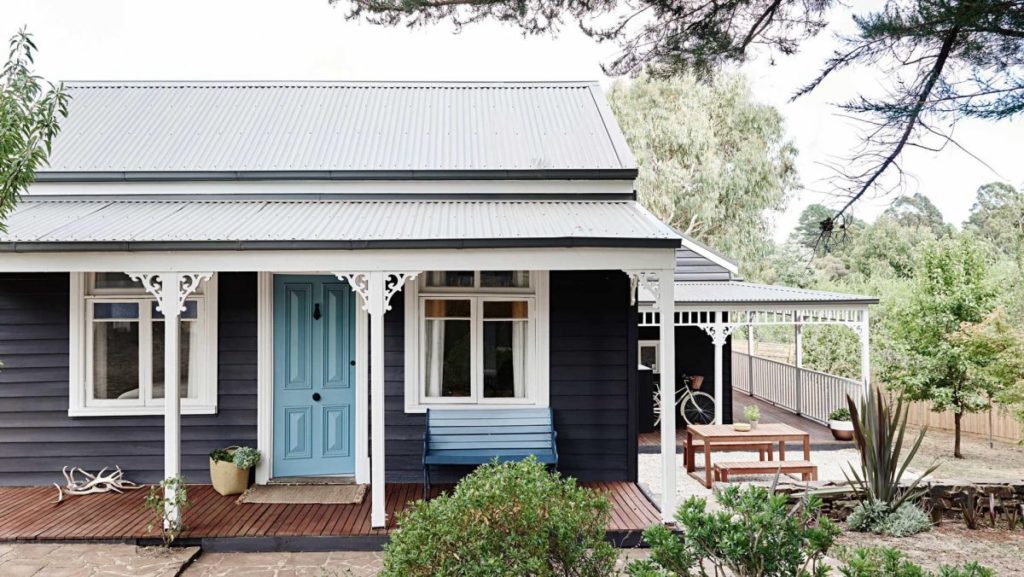










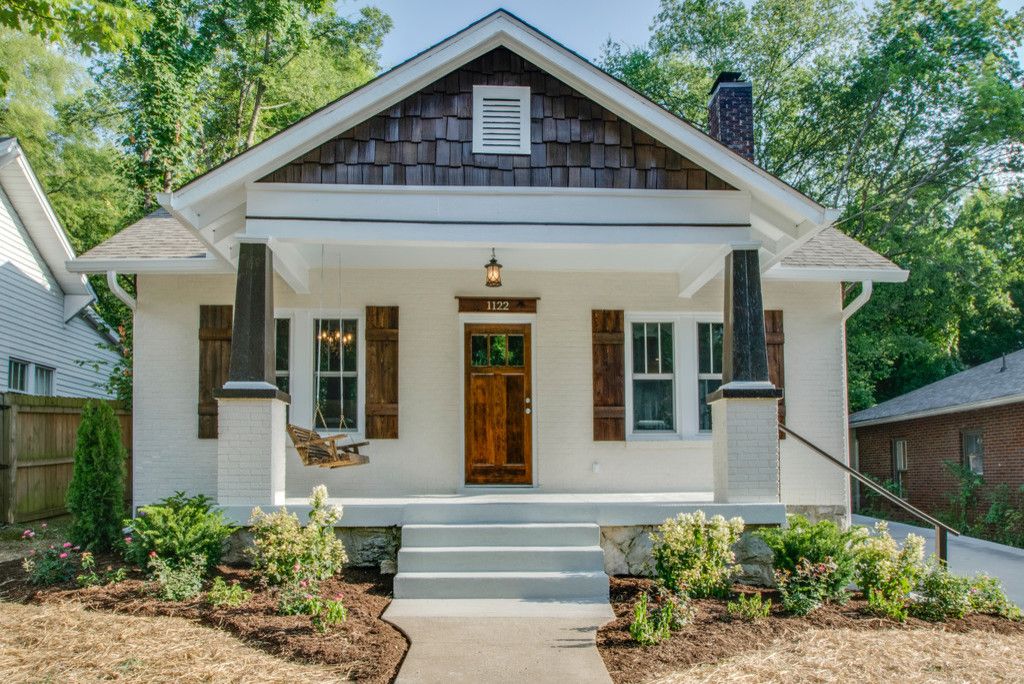






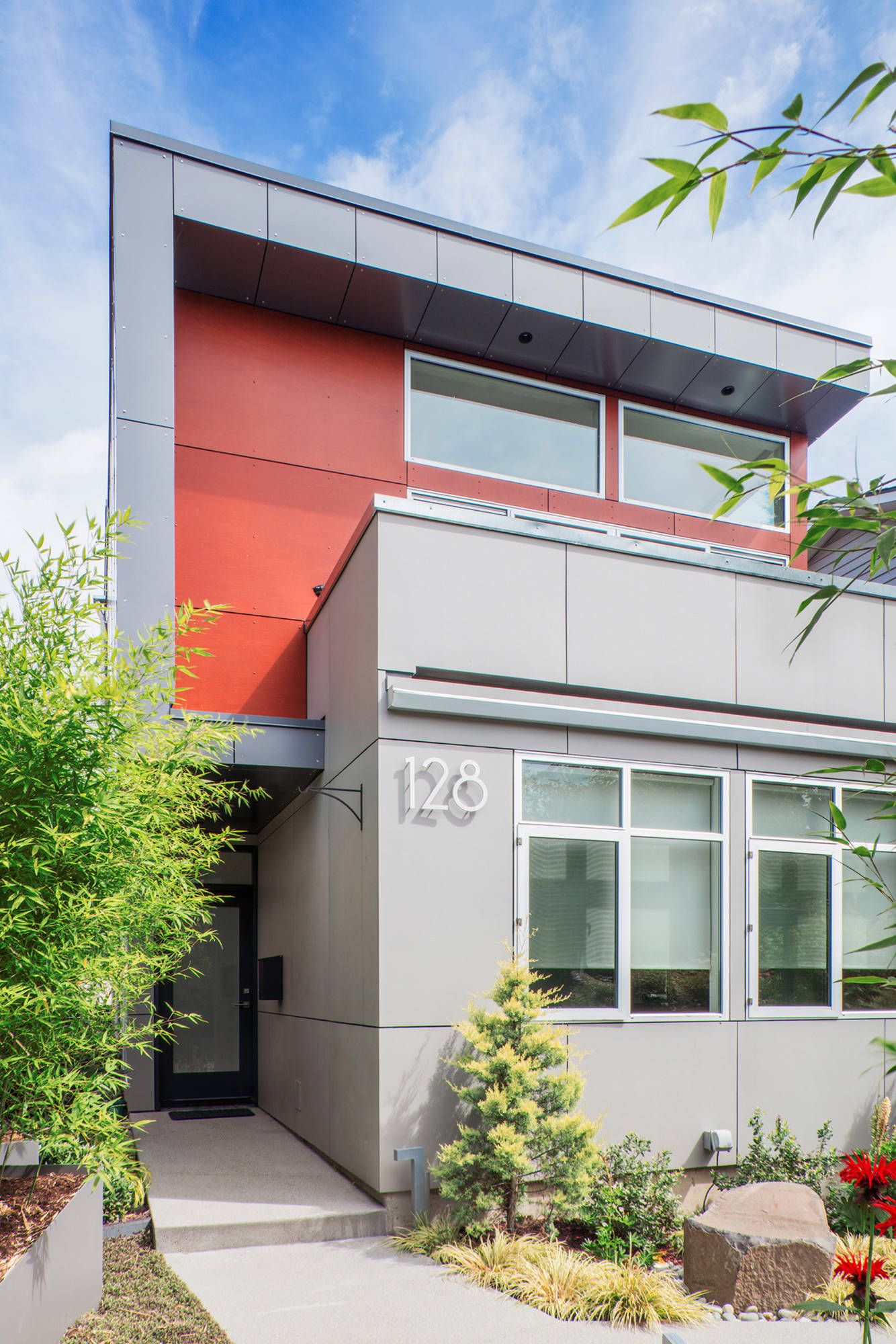


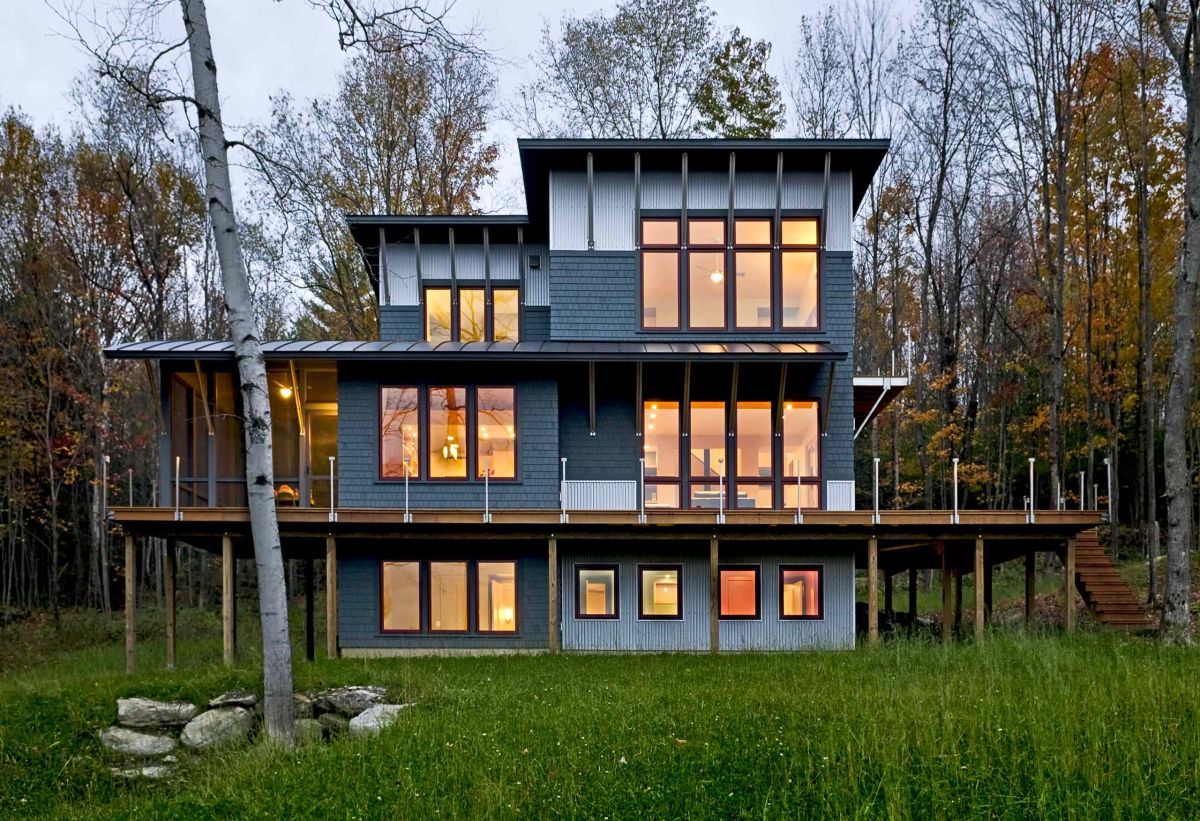

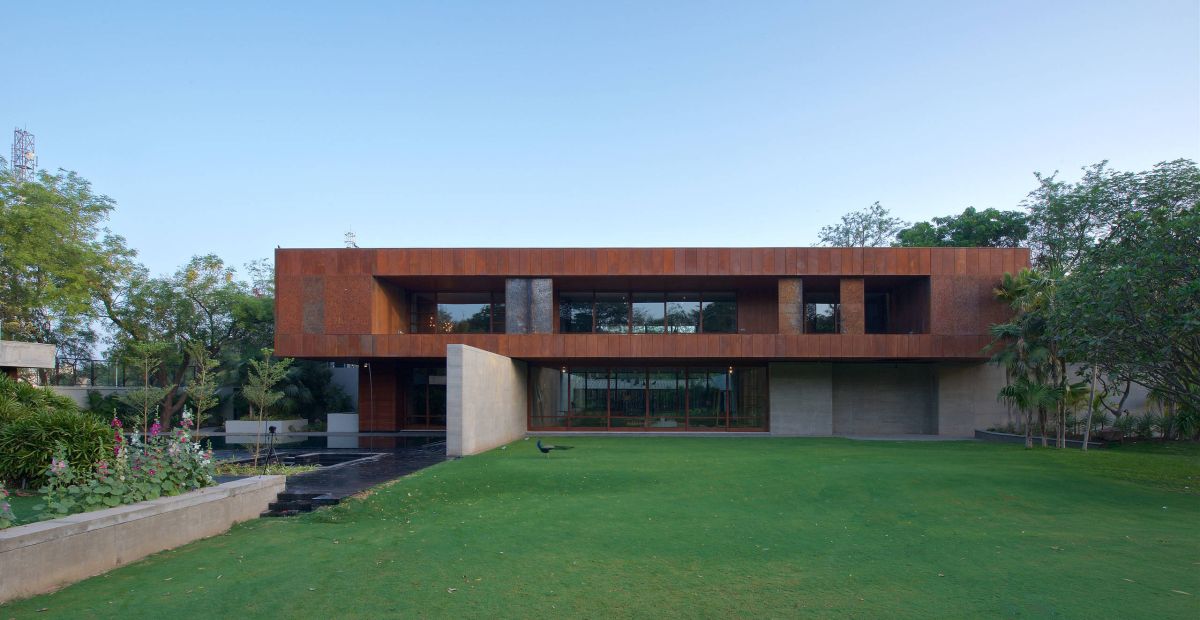
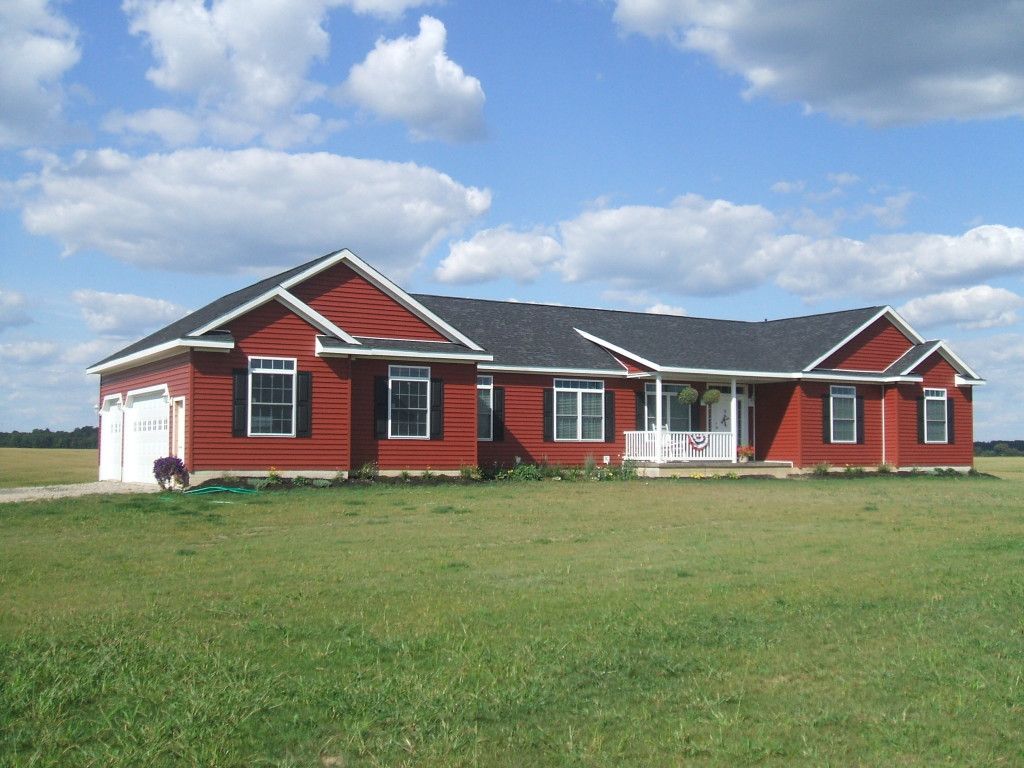



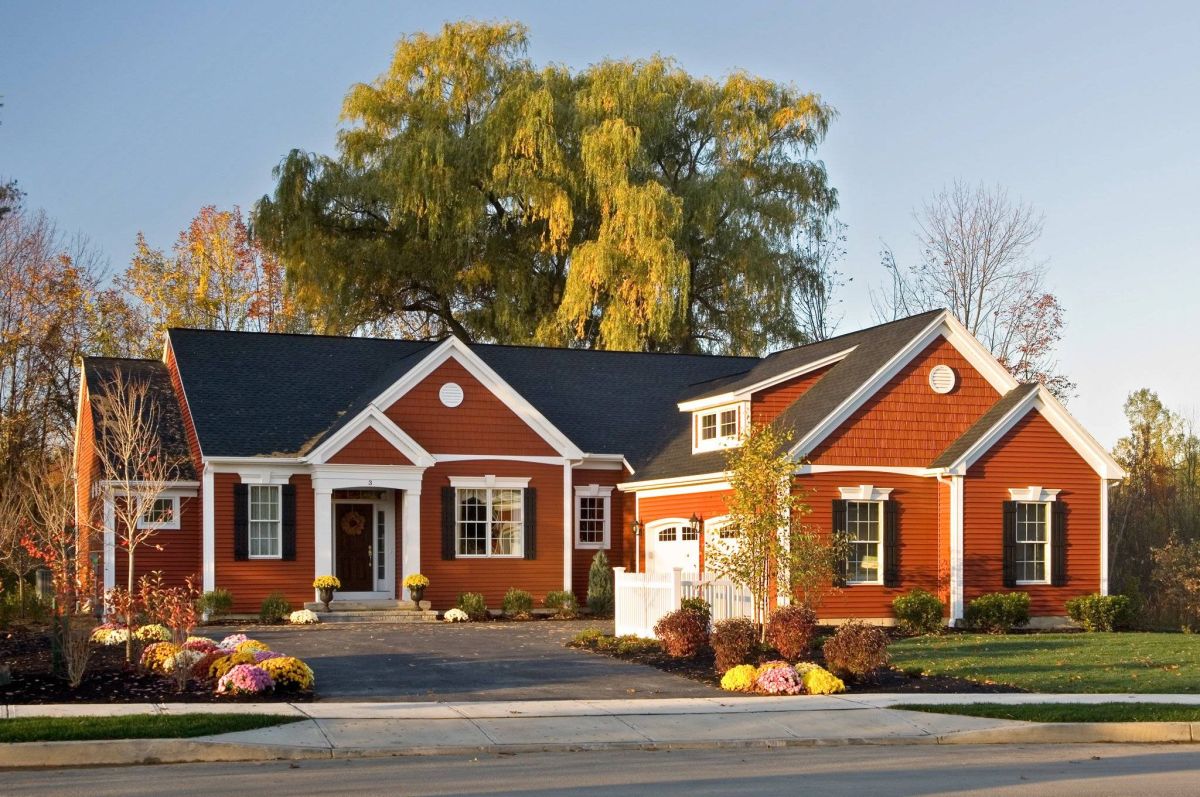




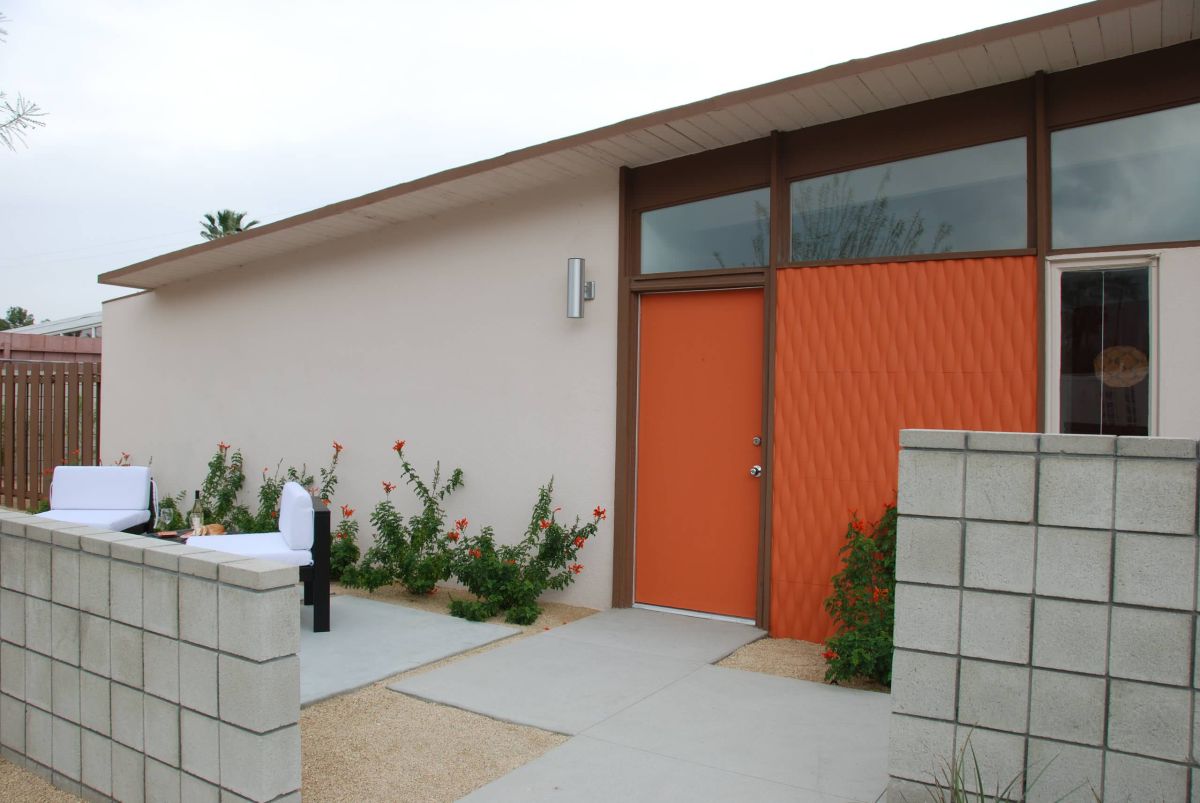







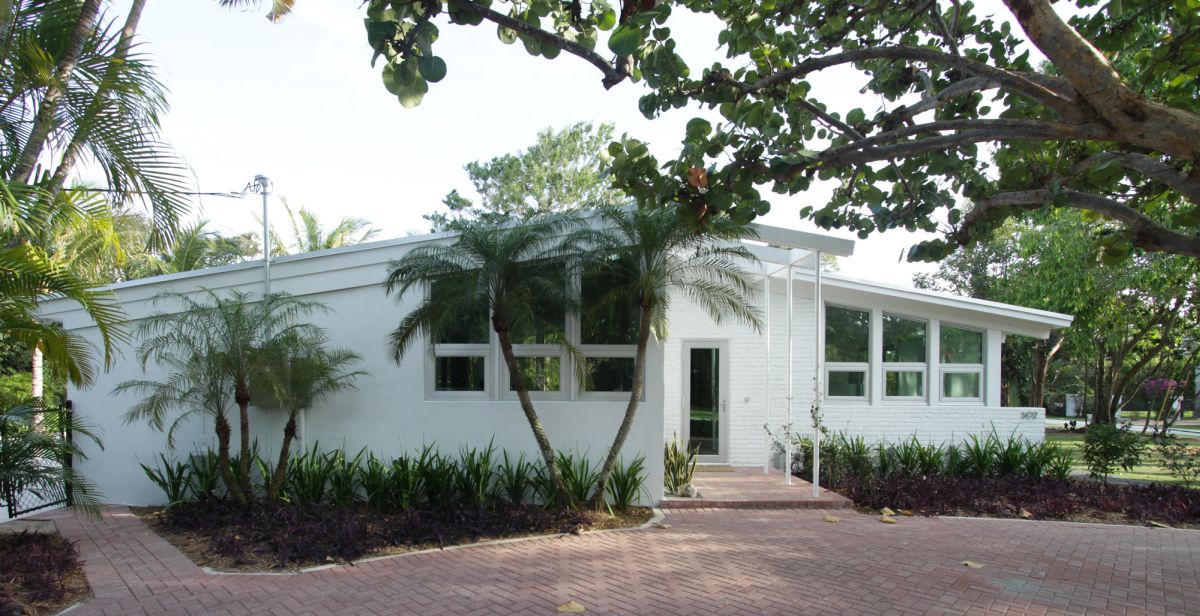



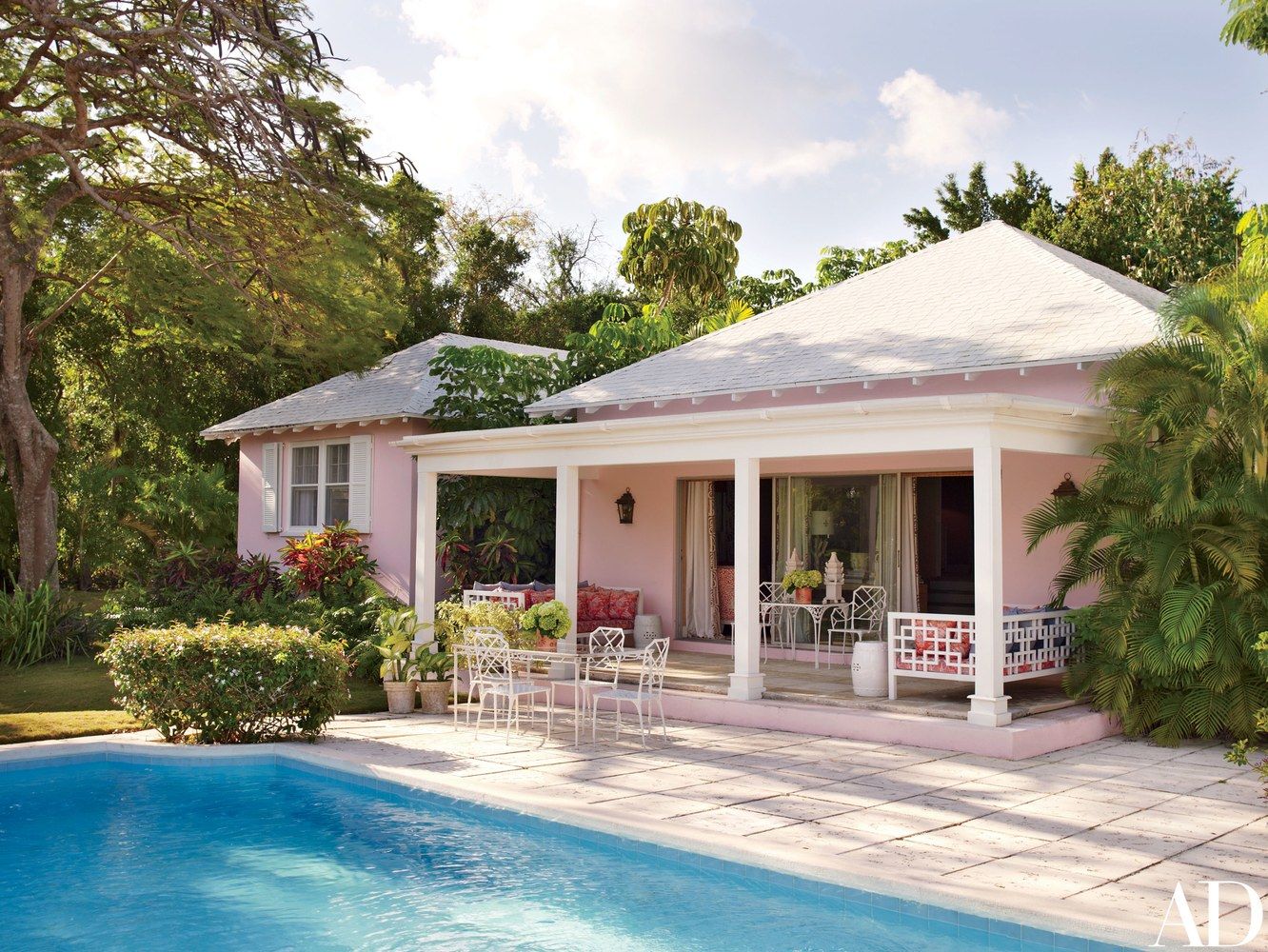

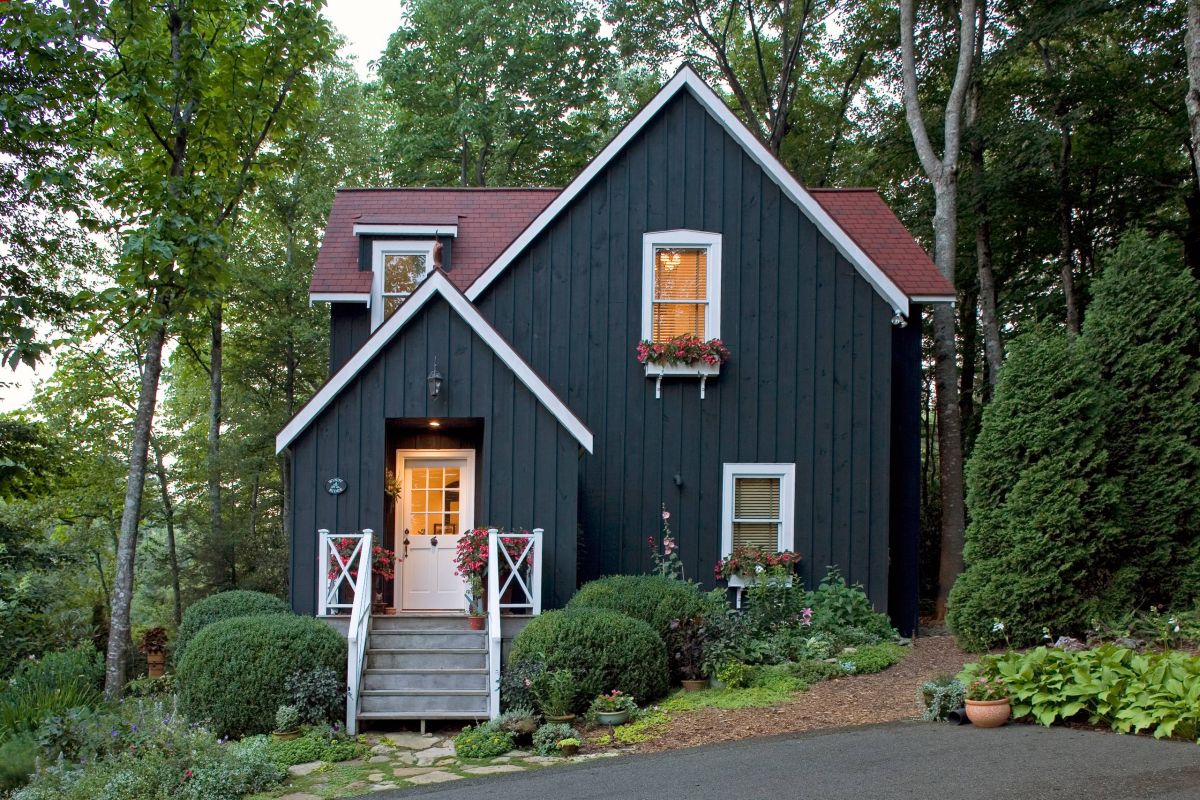



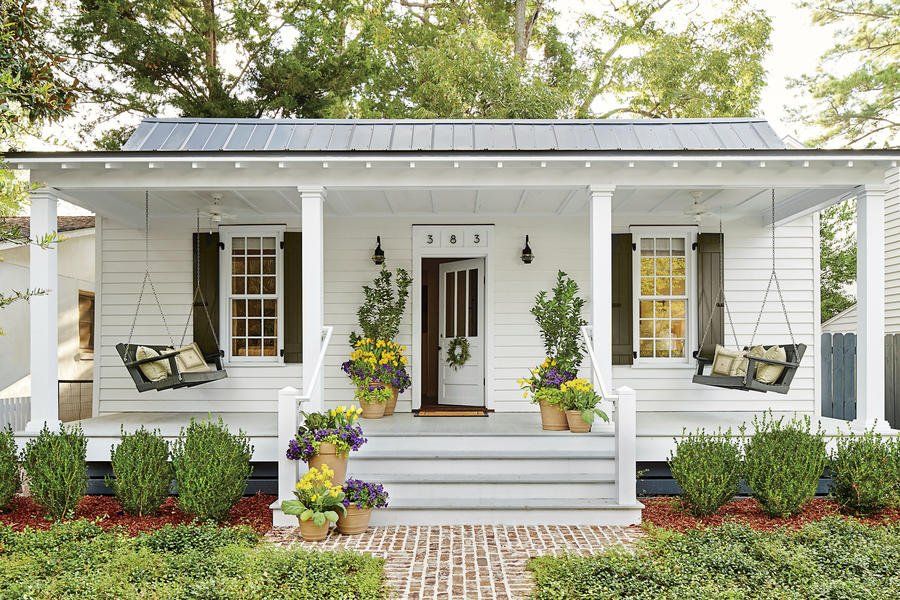

0 Commentaires